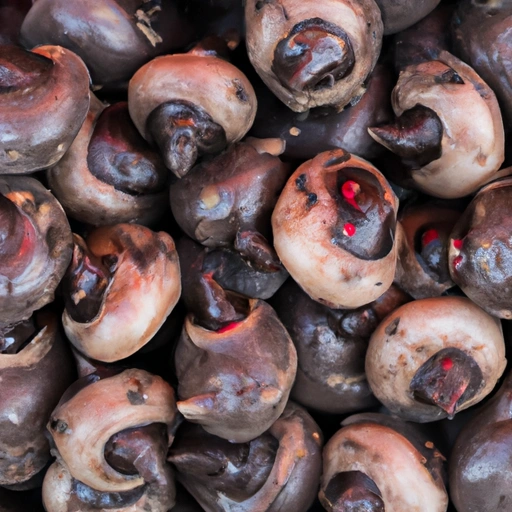Water Chestnut
Description

Water chestnuts, or Eleocharis dulcis, are not true nuts, but rather the corms of an aquatic vegetable that grows in marshes, ponds, paddy fields, and shallow lakes. They are revered in various cuisines for their unique crunchy texture and subtle, slightly sweet flavor. When peeled, these tuber-like corms have a crisp white flesh that can be enjoyed raw or cooked. Water chestnuts are a popular ingredient in Asian cuisine, particularly in Chinese dishes, where they are known as biqi or mǎtí in Mandarin.
Common uses
Water chestnuts are commonly used in salads, stir-fries, soups, and as a crunchy addition to stuffings and dumplings. They are also frequently found in Asian-inspired appetizers and can be served as a snack when candied or pickled.
Nutritional value
Calories
Per 100 grams (about 3.5 ounces), water chestnuts contain approximately 97 calories (407 kilojoules).
Protein
They provide about 2 grams of protein, making them a source of plant-based protein.
Fat
Water chestnuts are low in fat, with less than 0.1 grams per 100 grams.
Carbohydrates
The carbohydrates content is about 23.9 grams, which includes 3 grams of dietary fiber.
Vitamins
They are a good source of B vitamins, particularly vitamin B6 and riboflavin.
Minerals
Important minerals found in water chestnuts include potassium, manganese, and copper.
Health benefits
Water chestnuts are valued for their high water content and fiber, which aid in digestion and promote a feeling of fullness. The presence of antioxidants and anti-inflammatory compounds contributes to overall health and may help in reducing the risk of chronic diseases.
Potential risks
For those with a carbohydrate-controlled diet, it is important to consider the relatively high carbohydrate content of water chestnuts. Additionally, as with any food, there is a potential risk of allergic reaction, although it is relatively rare with water chestnuts.
Common recipes
Some common recipes include water chestnut cake, stir-fried vegetables with water chestnuts, and bacon-wrapped water chestnuts.
Cooking methods
Water chestnuts can be boiled, grilled, fried, or even eaten raw. They retain their crunch even when cooked, adding texture to dishes.
Pairing with other ingredients
They pair well with meats such as pork and chicken, as well as with other vegetables like broccoli, carrots, and snap peas. They also complement sauces and spices commonly used in Asian cuisines such as soy sauce, oyster sauce, and sesame oil.
Summary
Water chestnuts are a versatile and nutritious ingredient that adds a delightful crunch to a variety of dishes. Their unique texture and ability to absorb flavors make them a favorite in Asian cooking, though their use extends far beyond this cuisine. They offer health benefits due to their fiber and nutrient content while being low in fat. Whether used in traditional recipes or modern culinary creations, water chestnuts can enhance the texture and nutritional profile of a meal.